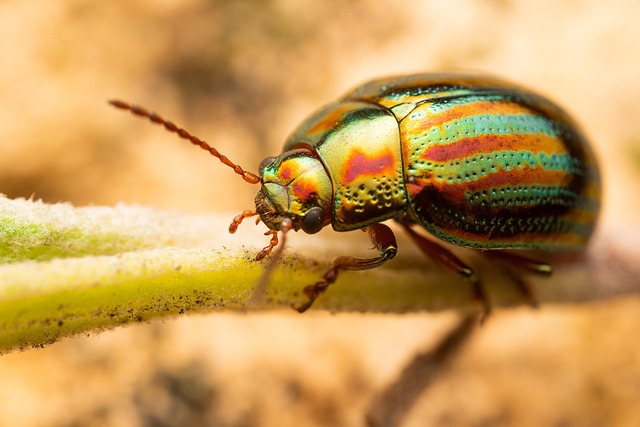Pillbugs (Armadillium species) are harmless but damaging crustaceans that invade homes due to their preference for moist, dark habitats. They feed on plant roots and leaves, causing lawn and garden damage. Effective residential pillbug treatment involves understanding their behavior and habitats, including damp environments, hidden shelters, and common infestation areas like kitchens and bathrooms. Early identification through signs like sticky materials, chewed fabrics, or a musky odor is crucial. Sealing entry points, reducing moisture, and applying insecticides are key strategies. Regular cleaning, maintenance, vacuuming, and professional pest control services complete the multi-step approach to successful residential pillbug treatment.
Pillbugs, also known as armadillos without shells, are small, segmented insects commonly found in homes and gardens. Understanding their species and behavior is crucial for identifying these persistent pests. This article guides you through what pillbugs are, where they thrive, and how to recognize their presence in your home. We’ll also explore effective residential pillbug treatment strategies to help you reclaim your living space.
What are Pillbugs? Understanding Their Species and Behavior
Pillbugs, scientifically known as Armadillium species, are tiny crustaceans often mistaken for insects. Despite their charming appearance, they can become a nuisance in residential areas, especially when their populations grow, leading to what’s commonly known as a pillbug invasion. These creatures have a unique ability to survive in various environments but prefer moist, dark, and secluded spots. They are primarily nocturnal, seeking shelter during the day and becoming active at night to feed on decaying plant matter, fungi, and other organic materials.
Understanding their behavior is crucial when it comes to effective residential pillbug treatment. Pillbugs are not harmful to humans or pets but can cause damage to lawns and gardens by feeding on grass roots and leaves. They breed rapidly in the right conditions, making it essential for homeowners to identify and address infestations early. Knowing their preferred habitats helps in developing strategies to deter them from homes and ensure a peaceful coexistence with these tiny creatures.
Identifying Common Habitats Where Pillbugs Thrive
Pillbugs, also known as armadillos, are small, wingless insects that belong to the family Armadillidiidae. Identifying their preferred habitats is crucial for those seeking effective residential pillbug treatment. These creatures thrive in damp and humid environments, making them common residents in gardens, basements, attics, and other areas with high moisture levels. They often seek shelter under rocks, logs, debris, and even potted plants.
Residential spaces with poor ventilation or water leaks are particularly attractive to pillbugs. Garages, kitchens, and bathrooms are common spots where these insects proliferate due to the availability of food sources like starchy materials, plant debris, and even some types of fabric. Recognizing these habitats is the first step in implementing targeted treatments to control and eliminate pillbug infestations effectively.
Signs of a Pillbug Infestation in Your Home
If you’re noticing small, armored insects scurrying across your floors or crawling in hidden corners, it might be a sign of a pillbug infestation. These pests, also known as armadillos, are common household intruders, attracted by damp environments and organic matter. Look for these telltale signs: sticky or chewed materials, particularly around window sills and doors; small holes in fabrics, clothing, or upholstery; and a distinctive musky odor.
Pillbugs thrive in dark, damp spaces like basements, attics, or crawl spaces, often entering homes through cracks, gaps, or unscreened windows. To confirm an infestation, inspect your home thoroughly at night when these nocturnal creatures are most active. A residential pillbug treatment involves sealing entry points, reducing moisture levels, and employing appropriate insecticides to eliminate existing populations and prevent future invasions.
Effective Residential Pillbug Treatment Strategies
When dealing with a residential pillbug infestation, there are several effective strategies to ensure successful treatment. The first step is to identify and seal entry points. Pillbugs typically enter homes through small cracks and gaps around windows, doors, and utility pipes. Sealing these openings with caulk or weatherstripping can prevent their return. Next, regular cleaning and maintenance are crucial. Pillbugs are attracted to organic debris, so keeping your home clean, particularly in kitchens and bathrooms, can reduce attractions.
Vacuuming floors and surfaces regularly helps remove pillbugs and their eggs. Additionally, using damp mops to wipe down floors can make the environment less hospitable for them. For persistent infestations, professional pest control services offer safe and effective solutions. These experts can identify and target specific habitats while providing long-lasting protection against future invasions, ensuring a pillbug-free home.
Pillbugs, though small, can cause significant distress in homes due to their presence and multiplying habits. Understanding their species, behaviors, and preferred habitats is the first step towards effective residential pillbug treatment. By identifying signs of infestation early and employing tailored strategies, homeowners can successfully manage and eliminate these pesky critters, ensuring a comfortable living environment. When it comes to residential pillbug treatment, knowledge truly is power.
